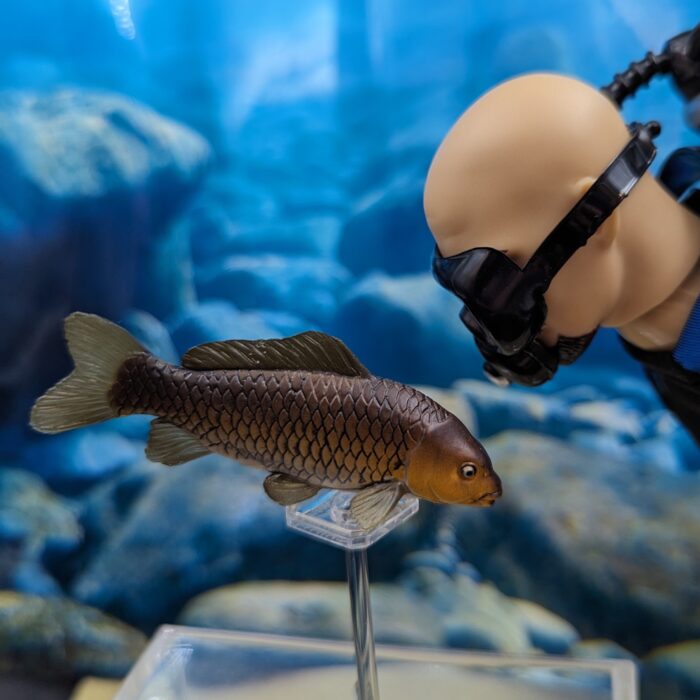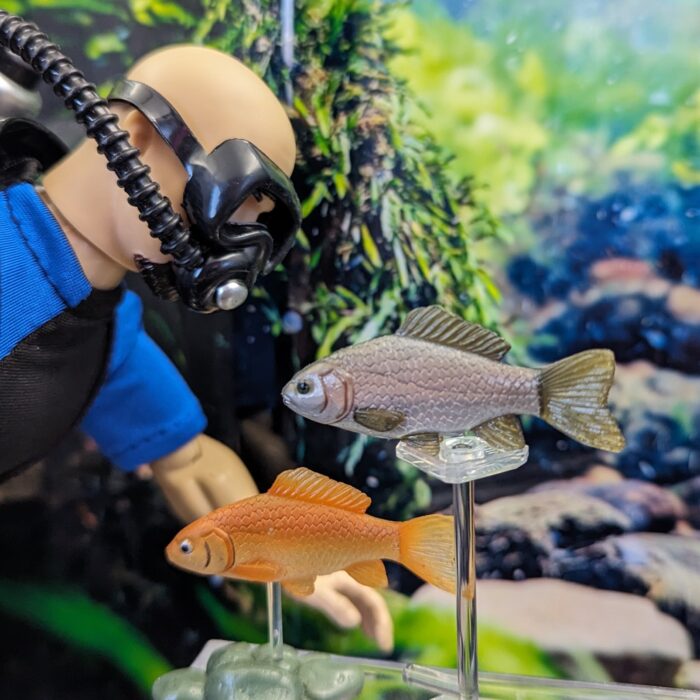This is the Common Carp, originally labeled Cyprinus carpio, model 20 and number 5 from the second series, in the first releases. However, from what I can tell…it might actually be Cyprinus rubrofuscus, the Amur carp, which is now considered the wild form of the familiar domestic koi.
Brand: Yujin
Japanese Perch (Freshwater Fishes Book 2, first release by Yujin)
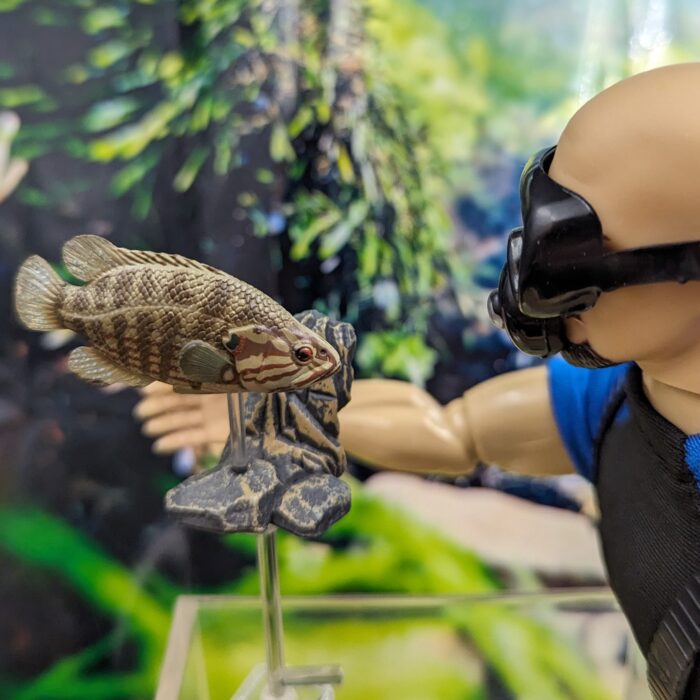
This figure is the Japanese Perch (also known as Aucha perch or Oyanirami in Japan), Coreoperca kawamebari), model 19 and number 4 from the second series, second release. This is a small-sized predatory perch that lives rivers and streams. Often in the middle parts of the water column hunting for invertebrates and anything else.
Willow Shiner (Freshwater Fishes Book 2, first AND second release by Yujin)
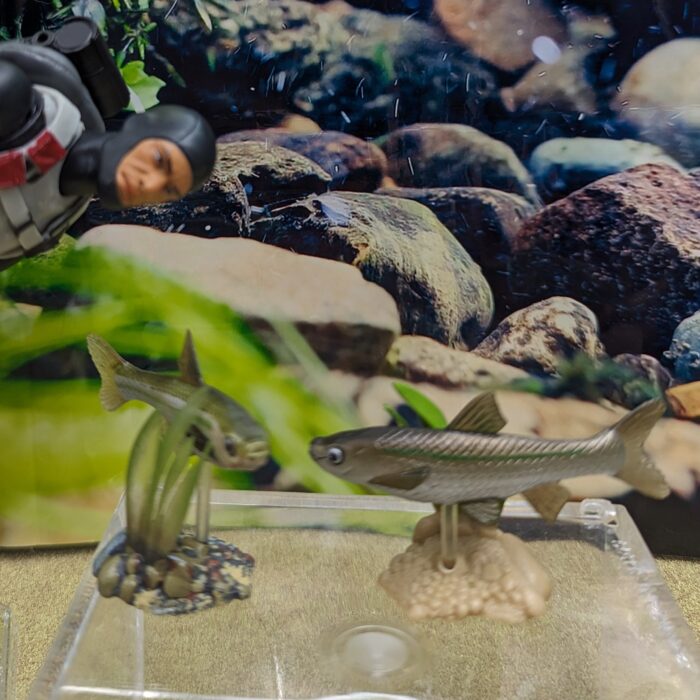
This figure is the Willow Shiner (or in Japan, Honmoroko), Gnathopogon caerulescens, model 18 and number 3 in the second series. At the original time of writing, this was one of two species out of the whole series that I didn’t have. Then I was able to get both versions at once…
Note: with two versions, I am putting up photos as side-by-side ‘galleries; with release 1 (darker coloured) on the left, release 2 on the right.
Goldfish, secret version (Freshwater Fishes Book 2, second release by Yujin)
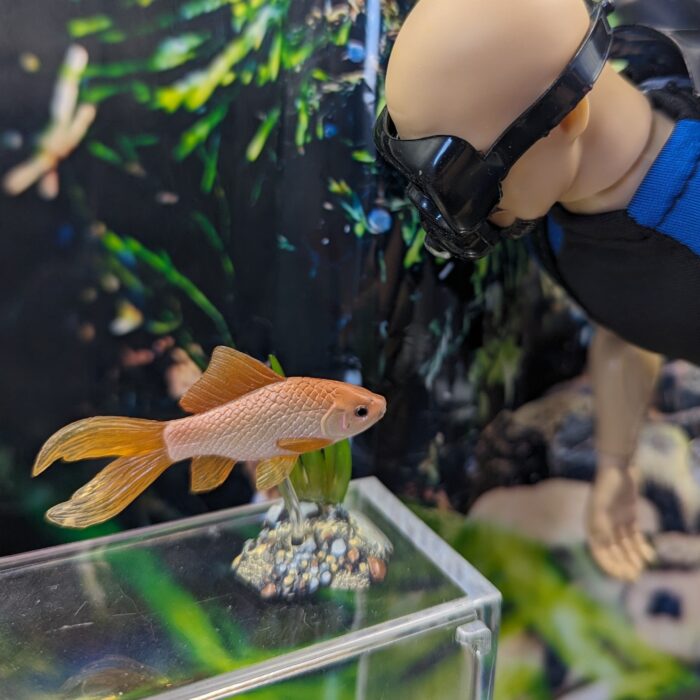
This figure is the Common Goldfish, Carassius auratus, model number 17, from the second series. There are a couple of different ‘wild’ versions in Book 2, but for whatever reason I don’t have either one of them. Instead, this is the Secret domestic version, which is listed as number 17 in the series.
Japanese Silver Crucian Carp, secret version (Freshwater Fishes Book 2, second release by Yujin)
Japanese Silver Crucian Carp (Freshwater Fishes Book 2, second release by Yujin)
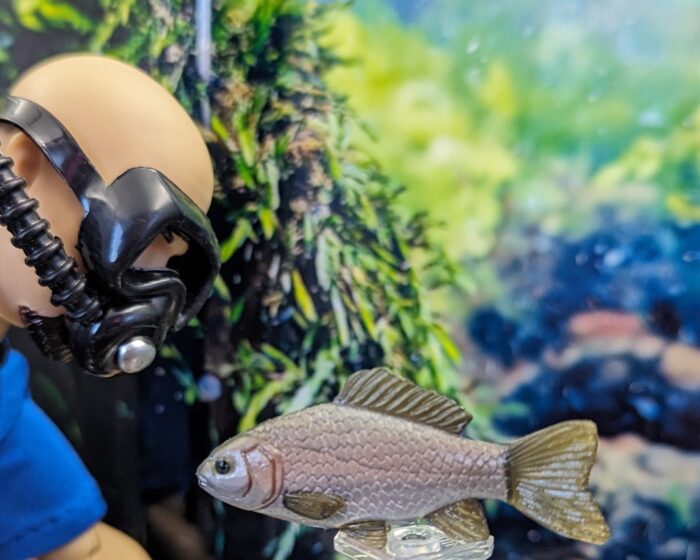
Note – a lot more information has become available since I first wrote this one!
This figure is the Japanese silver crucian carp (or Langsdorf’s Goldfish, or Ginbuna in Japan), Carassius langsdorfii (according to Fishbase; earlier sources refer to it as the subspecies Carassius auratus langsdorfii ), stamped number 16 and listed as figure 1 from the Book 2 series, second.
Chum Salmon, Alevin & Egg (Freshwater Fishes Book 2, second release by Yujin)
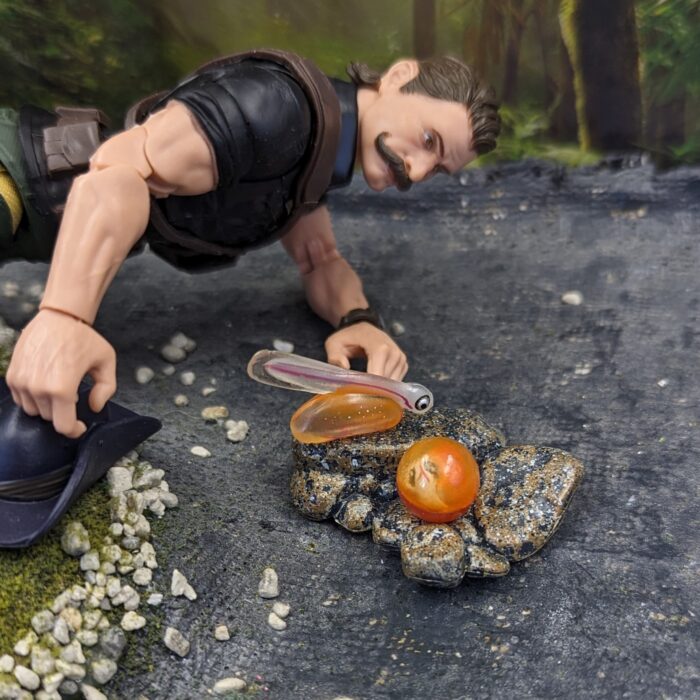
This figure is the Chum Salmon egg and alevin (hatchling), Oncorhynchus keta, number 19 in Book 2, but the number 15 is stamped into it—and it’s another Special Secret (I am reposting these based on the model numbers)! The difference with this one is that the numbering would appear to place it in the Series 2 set—but the papers for series 2 start at model 16 (although they restart at 1 within each Book), so it’s a little unusual for the Secret to be ‘first’ in the series.
Asian Arowana, Gold Highback variety (Freshwater Fishes Book 1, second release by Yujin)
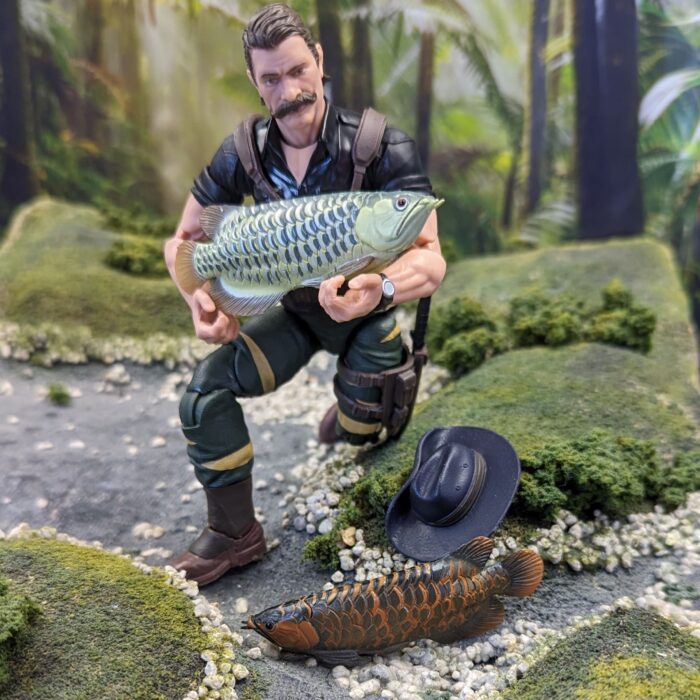
This figure is the Se-Kin Dragon Arowana AKA Malyasian Golden Highback Arowana, Scleropages formosus, although some researchers have split up the species into four, and the Gold Malaysian variety may belong in S. aureus if the species are valid—and most researchers are not yet convinced (edit–and continue not to be). Like the Yujin chili red arowana before, the figure is number 15 from the second release, but is stamped with model number 15.
Asian Arowana, Chili Red variety (Freshwater Fishes Series 1, first release reissue by Yujin)
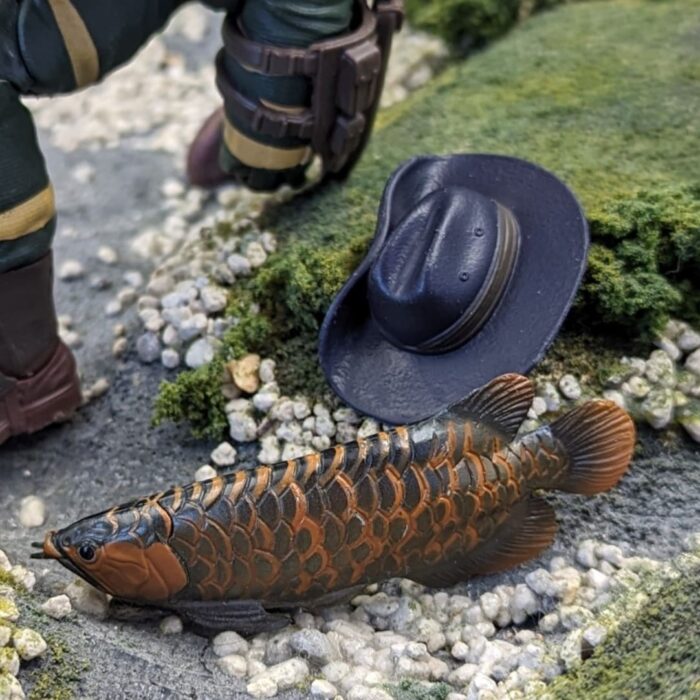
This figure is the Asian Arowana (or Asian Bonytongue, or Dragonfish), Scleropages formosus, number 15 from the first series—but it’s (one of) the Special Secret(s) (edit – when I first did these walkarounds, I thought there was only one secret figure for each series…turned out there are at least three for every release).
Barramundi, Adult and Juvenile (Freshwater Fish Pictorial Book 1, original release and re-release by Yujin)
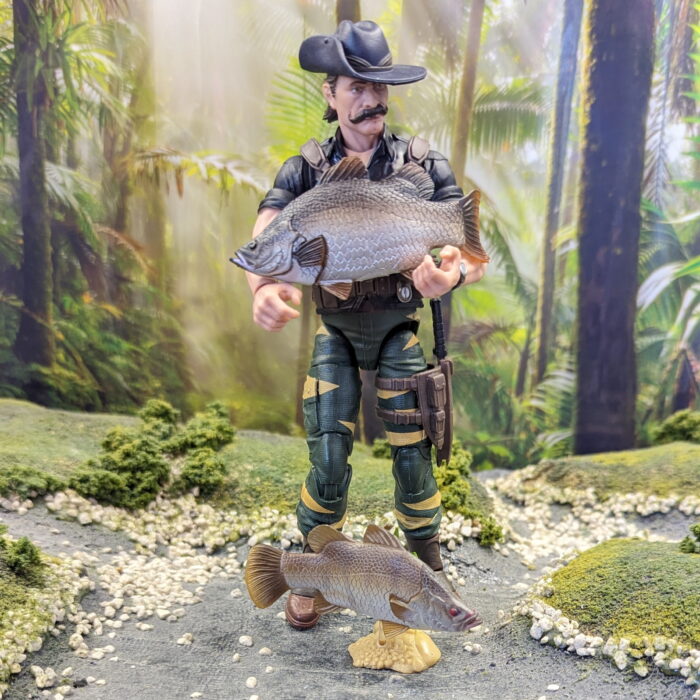
(editor note–I need to update more than normal–because I didn’t discover the adult figure until long after the original writing about the juvenile)
These figures represent the Barramundi (or Asian Seabass), Lates calcarifer. The model number is 13 from the first series (original release); the juvenile is also model number 13, but number 14 in terms of the Yujin series.
Three-spined Stickleback (Freshwater Fish Pictorial Book 1, revised release, by Yujin)
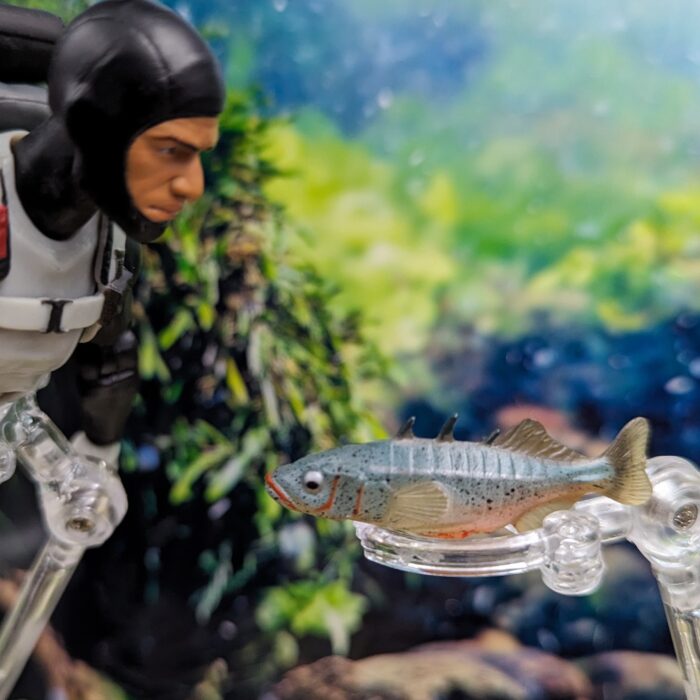
This figure is the Three-spined Stickleback (or Tiddler, or Tiddlebat, in Great Britain, because that’s kind of hilarious), Gasterosteus aculeatus, number 12 from the first series. This is the only representative of the stickleback order in the set; phylogenetically, they are grouped with more familiar spiny fish like scorpionfish, sea-robins and wolffish (at one time they were grouped with seahorses, pipefish and kin in Sygnathiformes, but that is no longer considered correct).
Japanese Rice Fish (Freshwater Fish Pictorial Book 1, revised release, by Yujin)
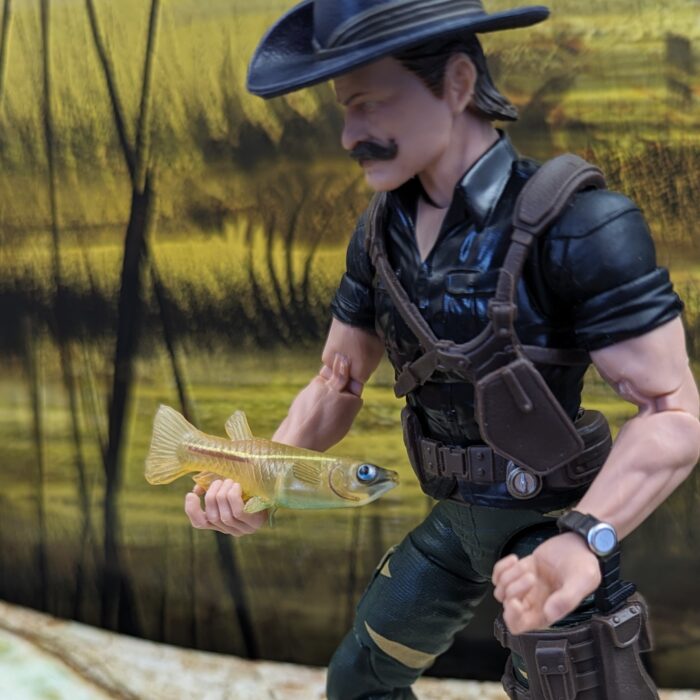
This figure is the Japanese Rice Fish (or Medaka or Japanese Killifish), Oryzias latipes, number 11 from the first series. This is the only beloniforme fish in the set; this order includes other surface-oriented fish like flying fish, needlefish and halfbeaks (but, not killifish—taxonomy can be weird). The Japanese Rice fish is found throughout Eastern Asia*, living in a wide range of shallow and slow-moving bodies of water like rice paddies, marshes, streams and tidal pools (it is a fresh- and brackish-water fish).

